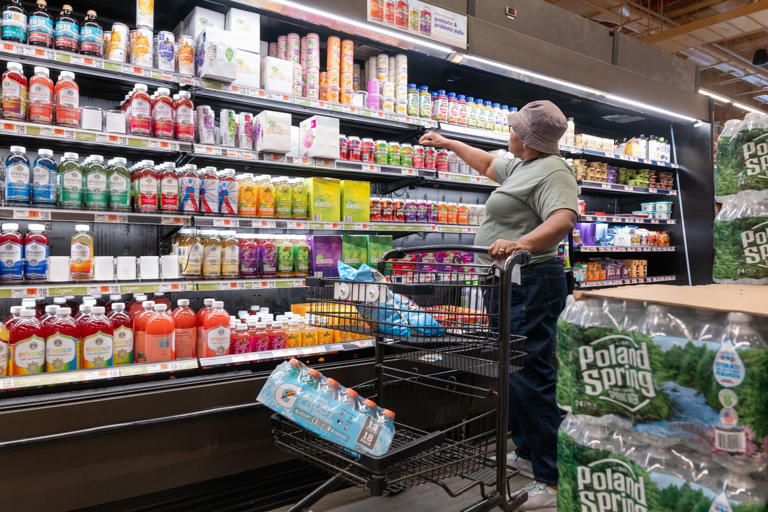The U.S. economy saw an acceleration in the second quarter of this year, driven by increased consumer spending, higher business investments in equipment, and the buildup of inventories. Additionally, inflation showed signs of cooling down. According to the Commerce Department, the gross domestic product (GDP), which measures the value of all goods and services produced in the U.S. and adjusts for inflation and seasonality, rose at an annual rate of 2.8% from April through June, reaching $22.9 trillion. This growth was notably faster than the 1.4% rate recorded in the first quarter and significantly exceeded the 2.1% rate anticipated by economists.
Household spending, a key driver of the U.S. economy, increased at a faster pace as Americans’ incomes continued to rise. This positive economic data led to an uptick in stock markets, with the Dow Jones Industrial Average gaining approximately 250 points, or 0.6%, and the S&P 500 rising by 0.4%, following a significant market selloff the previous day.
Despite the robust GDP growth, the outlook for the Federal Reserve remains largely unchanged. Fed officials have indicated their intention to hold interest rates steady in their upcoming meeting next week but may consider cutting rates in September if inflation continues to ease. This GDP report is one of the final major economic indicators Fed officials will review before their meeting. The data suggests that the economy is stable, even two years after high inflation prompted the Fed to raise rates at an unprecedented pace in decades. However, this report reflects past months rather than future projections, with companies warning that customers are feeling financial pressure, which they expect to persist.
Richard Fairbank, founder and CEO of Capital One Financial Corp., noted during an earnings call that the U.S. consumer remains a significant strength in the overall economy. However, he acknowledged that the effects of high inflation and borrowing costs are stretching some consumers financially.
Internationally, companies like Nestlé are also feeling the impact of cost-conscious consumers. The Swiss multinational, known for products like KitKat chocolate bars and Nescafé coffee, lowered its full-year sales guidance, citing a slowdown in price increases as shoppers become more budget-aware. Nestlé CEO Mark Schneider mentioned that consumer mood is muted, with shoppers in the U.S., Europe, and China exhibiting value-seeking behavior.
In the airline industry, carriers are dealing with excess capacity and weaker fares. Both Southwest Airlines and American Airlines reported a significant drop in second-quarter earnings. Similarly, shares of automotive companies like Ford and Jeep-maker Stellantis fell sharply after disappointing earnings.
Despite these challenges, some investors and economists view the latest GDP report as a sign that the economy is progressing steadily, though not at the rapid pace seen in the latter half of the previous year. A measure of consumer and business spending, which excludes volatile categories such as trade, inventories, and government spending, rose at an annual rate of 2.6%, consistent with the first quarter. Joe Brusuelas, chief economist at RSM US, described this as indicative of a “rock-solid economy that has not fallen off a cliff nor looks to any time soon.”
Business investment, particularly in nonresidential fixed investment, showed positive signs with a 5.2% increase. This includes spending on commercial construction, equipment, and software. Notably, capital expenditures on equipment grew by 11.6%, although spending on structures declined.
Inflation, as measured by the Fed’s preferred gauge, showed signs of slowing. The personal-consumption expenditures price index, excluding volatile food and energy prices, rose at an annualized rate of 2.9% in the second quarter, down from 3.7% in the first quarter. This cooling inflation, alongside increased consumer and business spending, helped offset negative developments like a decline in residential investment.
Despite these positive indicators, many Americans remain dissatisfied with the high prices of groceries, cars, and homes compared to a few years ago. High borrowing costs are also restraining consumer spending, and the previously booming job market is beginning to cool. The spring home-buying season, typically the most active period for the housing market, was lackluster due to high prices and elevated mortgage rates.
Overall, the U.S. economy appears to be on solid ground, but challenges remain as consumers and businesses navigate the effects of past inflation and high borrowing costs.
